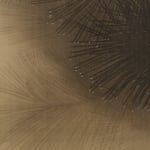Shiba Senshū
Pine in Rain, 1920s
Ink and shell powder on silk, mounted on panel with silk brocade
Overall size 62¼ x 34 in. (158 x 86.5 cm)
Image size 54½ x 26¼ in. (139 x 67.3 cm)
Image size 54½ x 26¼ in. (139 x 67.3 cm)
T-3814
Further images
Senshū first studied Japanese-style painting under Katō Gennosuke, then Western-style painting under the leading Meiji-era painter Asai Chū with Asai Chū. Senshū was particularly interested in pencil drawing and gained...
Senshū first studied Japanese-style painting under Katō Gennosuke, then Western-style painting under the leading Meiji-era painter Asai Chū with Asai Chū. Senshū was particularly interested in pencil drawing and gained a formidable reputation for his skill in this medium. Together with other young Nihonga painters he formed a group that developed into the association Heigogakai which held regular exhibitions from 1907 to 1912. In 1919 Senshū submitted a painting to the first Teiten national art exhibition that showed his style to be developing in a more traditional direction, and it was from this time that he started to create designs for Yūzen textile dyeing. An exhibition of Senshū’s pencil drawings, watercolors, and Nihonga-style paintings was held in 2008 at Sakura City Museum of Art. The present scroll deftly adapts Senshū’s skill with the pencil and applies it to the traditional medium of brush and ink, producing an effect which is both naturalistic and meditative.





